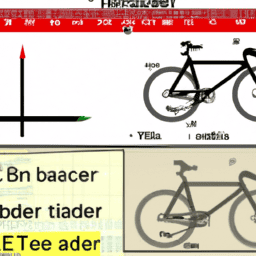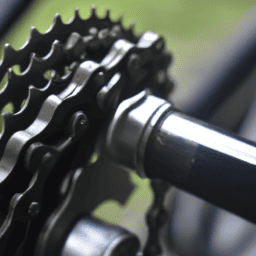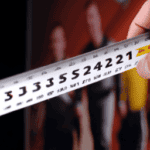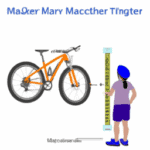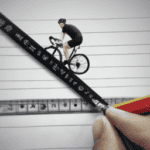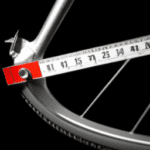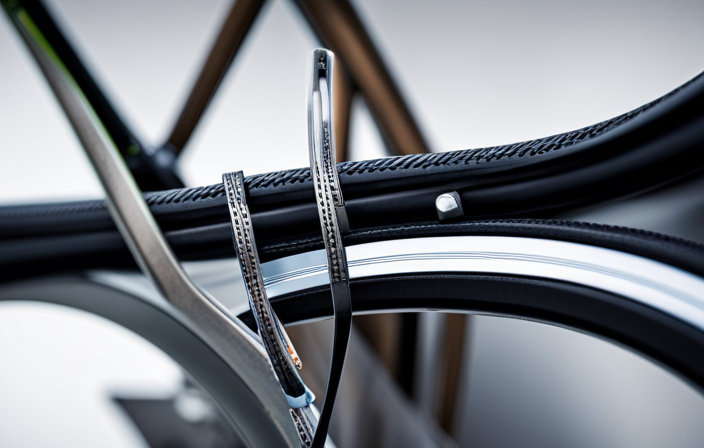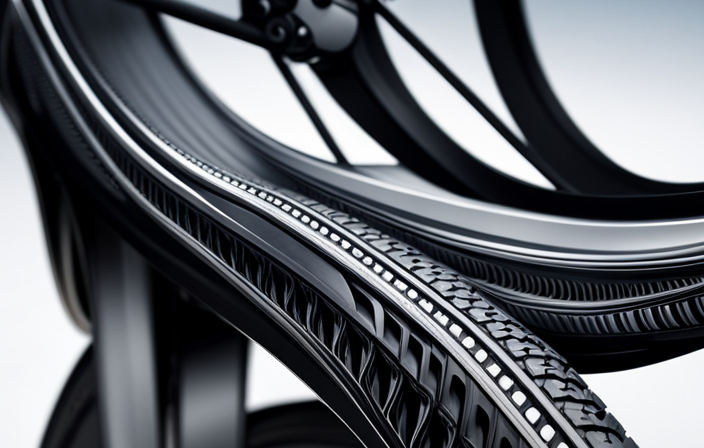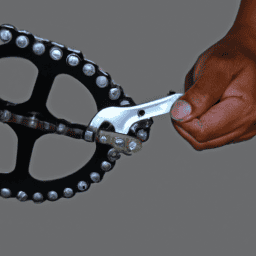As an experienced bike rider, I understand how crucial it is to select the correct bicycle size. Choosing a bicycle that’s either too big or too small can lead to discomfort, soreness, and potential injuries. In contrast, a perfectly sized bike can enhance your riding experience, making it comfortable, efficient, and fun.
But how do you determine the size of a bicycle that is right for you? In this article, I will guide you through the factors that determine bicycle size, how to measure your inseam length, sizing charts and recommendations, test riding and adjustments, and maintenance and upkeep tips to ensure that your bike stays perfectly sized for you.
Choosing the right size of bicycle is crucial for both novice and experienced riders. It determines your comfort, stability, and performance on the bike. The right size of bike will allow you to ride longer distances without experiencing any discomfort, reduce the risk of injury, and improve your cycling skills.
However, determining the right size of bike can be challenging, especially if you are new to cycling or have never measured your inseam length before. In this article, I will share with you my expert knowledge and experience to help you determine the size of bicycle that is right for you.
Key Takeaways
- Saddle height and handlebar reach are critical measurements when choosing the right bike size.
- Inseam length is another vital step in determining the size of a bicycle.
- Testing and making necessary adjustments to the bike can greatly improve riding experience and prevent discomfort or injury.
- Custom sizing options and periodic assessments of fit can improve comfort, safety, performance, and enjoyment of the sport.
Factors that Determine Bicycle Size
There’s no one-size-fits-all for bicycles, as factors like inseam length and riding style play a key role in determining the right size.
When it comes to finding the right size, two critical measurements are saddle height and handlebar reach. Saddle height is the distance between the ground and the top of the saddle, while handlebar reach is the distance between the saddle and the handlebars.
To determine saddle height, stand next to the bike and adjust the saddle until it’s level with your hip bone. This ensures that your legs will be able to fully extend while pedaling.
As for handlebar reach, the distance should be comfortable enough for your arms to rest on the handlebars without straining. Measuring inseam length is another vital step in determining the correct bike size.
Measuring Inseam Length
Measuring your inseam is essential for finding the perfect fit for your new bike. The inseam length is measured from the crotch to the bottom of the foot, and it’s important to get an accurate measurement to ensure proper posture and comfort while riding.
Here are some things to keep in mind when measuring your inseam:
- Wear the shoes you plan to ride in to get a more accurate measurement.
- Stand against a wall with your feet shoulder-width apart and your back straight.
- Use a tape measure to measure from the floor to your crotch.
In addition to proper posture and shoe choice, your body weight can also affect how your bike fits. A heavier person may need a larger frame size to accommodate their weight and provide proper support.
It’s important to take all of these factors into consideration when determining the size of your bike. When it comes to finding the right bike size, it’s important to consult sizing charts and recommendations from the manufacturer. These charts take into account the inseam length, body weight, and other factors to suggest the best size for your body type.
By using these tools and taking accurate measurements, you can ensure a comfortable and safe ride.
Sizing Charts and Recommendations
To make sure you get the perfect fit for your new bike, it’s important to consult the manufacturer’s sizing charts and recommendations. These charts are designed to help you determine the correct size for your body type and riding style. They take into account various measurements such as your height, inseam length, and arm length to recommend the appropriate frame size for you.
In addition to sizing charts, there are also fitting techniques that you can use to ensure a proper fit. Professional fittings are recommended for those who want the most accurate and personalized fit possible. During a professional fitting, a trained technician will take various measurements and make adjustments to the bike to ensure it fits your body perfectly.
By using a combination of sizing charts and fitting techniques, you can be sure that your bike will fit you like a glove.
When you have determined your bike’s size, it’s time to test ride it and make any necessary adjustments. This will help you get a feel for the bike’s handling and comfort level.
In the next section, we’ll cover the importance of test riding and how to make minor adjustments to your bike to ensure it’s the perfect fit for you.
Test Riding and Adjustments
Once you’ve consulted the sizing charts and received a professional fitting, it’s crucial to take your bike on a test ride and make any necessary adjustments to ensure optimal handling and comfort. One of the most important aspects of a comfortable ride is finding the right positioning on the bike. This can be achieved through a combination of saddle height, handlebar position, and pedal placement.
To determine the correct saddle height, sit on the bike and place your heel on the pedal at its lowest point. Your leg should be fully extended without locking your knee. For handlebar position, adjust the stem length and angle to achieve a comfortable arm and shoulder position. And for pedal placement, ensure that the ball of your foot is centered on the pedal spindle. With these adjustment techniques in mind, take your bike for a test ride on a variety of terrain to ensure optimal handling and comfort.
Making these adjustments can greatly improve your riding experience and prevent discomfort or injury. It’s important to note that your positioning may change over time as your fitness level and riding style evolve, so it’s always a good idea to recheck and adjust your bike as needed. Moving forward, proper maintenance and upkeep will also play a crucial role in keeping your bike in optimal condition for years to come.
Maintenance and Upkeep
As a cycling enthusiast, I can’t stress enough the importance of regular maintenance and upkeep for optimal performance.
From cleaning and lubricating the chain to checking tire pressure and brake pads, a well-maintained bike will not only ride smoother but also last longer.
Additionally, it’s crucial to reevaluate the size of your bike as your riding experience evolves, ensuring optimal comfort and efficiency on the road.
By following these maintenance tips and periodically assessing fit, you can enjoy a safer, smoother, and more enjoyable cycling experience.
Regular Maintenance for Optimal Performance
Regular maintenance keeps your bicycle in top shape, ensuring optimal performance. Two key components of regular maintenance are cleaning techniques and lubrication methods. Cleaning your bicycle regularly will help prevent wear and tear on the components, as well as keep your bike looking its best. Use a mild detergent and warm water to clean your bike, and make sure to dry it thoroughly afterwards. Avoid using high-pressure washers, as they can damage the delicate parts of your bike.
Lubrication is also an important part of regular maintenance. Keeping your bike properly lubricated will help reduce friction and wear on the moving parts of your bike. Use a good quality lubricant that is specifically designed for bicycles, and apply it according to the manufacturer’s instructions. Make sure to wipe away any excess lubricant, as it can attract dirt and debris. By following these simple maintenance tasks, you can ensure your bike is always running at its best. As you ride your bike more and more, you may find that your needs change or that you want to try something new. In the next section, we’ll discuss how to reevaluate the size of your bicycle as your riding experience evolves.
Reevaluating Size as Riding Experience Evolves
It’s important to keep in mind that your riding experience will evolve, and with that, your bike may need adjustments to ensure a comfortable and safe ride.
As you continue to ride and push yourself to new limits, you may begin to notice discomfort or pain in certain areas. This could be a sign that your bike is no longer fitting you properly.
To avoid any long-term damage or discomfort, it’s important to consider ergonomic modifications and custom sizing options. One option for making ergonomic modifications is to adjust the handlebars, seat, or pedals to better fit your body. This can help alleviate pressure on certain areas and improve your overall riding experience.
Additionally, some bike manufacturers offer custom sizing options, allowing you to choose a frame size and other components that fit your body type and riding style. Investing in a bike that fits you properly can not only improve your comfort and safety, but also your performance and enjoyment of the sport.
Frequently Asked Questions
What is the average weight of a bicycle and does it affect its size?
As an expert, I can tell you that the average weight of a bicycle is around 25-30 pounds. However, don’t fall for sizing myths – weight alone doesn’t determine the size that’s right for you.
Can a person’s height be the only determining factor when choosing a bicycle size?
A person’s height is not the only determining factor when choosing a bicycle size. Seat height adjustments and measuring inseam length are crucial for optimal fit. These factors should be considered along with riding style and intended use.
How important is the handlebar size when selecting a bicycle and does it affect the overall size of the bike?
Handlebar positioning is crucial when selecting a bike. It affects body posture and comfort on long rides. It’s important to consider handlebar width and shape to ensure proper fit and riding position, which can impact overall bike size.
Are there any specific techniques to ensure a comfortable ride on a bicycle of the right size?
Isn’t it funny how one can buy a perfectly sized bicycle, but still have an uncomfortable ride? That’s why proper posture and saddle height are crucial. Always test the bike before purchasing to ensure maximum comfort and efficiency.
Are there any restrictions on the types of activities one can engage in with a bicycle of a certain size?
When selecting a bicycle, size is important for comfort and performance. Activities restrictions may exist for certain sizes, such as limitations on extreme off-road riding with smaller frames. Consult with a bike expert for guidance.
Conclusion
In conclusion, determining the right size of a bicycle is crucial to achieve maximum comfort, performance, and safety. Just like how the right shoes can make or break a marathon, the perfect bike size can make or break your cycling experience. It’s like finding your soulmate – when you find the perfect fit, everything falls into place.
As a seasoned cyclist, I can’t stress enough the importance of measuring your inseam length, consulting sizing charts, and test riding to ensure the right fit. Don’t be afraid to make adjustments to the bike, such as adjusting the seat height or handlebar position.
And remember, proper maintenance and upkeep of your bike will not only ensure it lasts longer but also ensures it continues to fit you perfectly.
So go forth, fellow cyclists, and find your perfect match on wheels!
